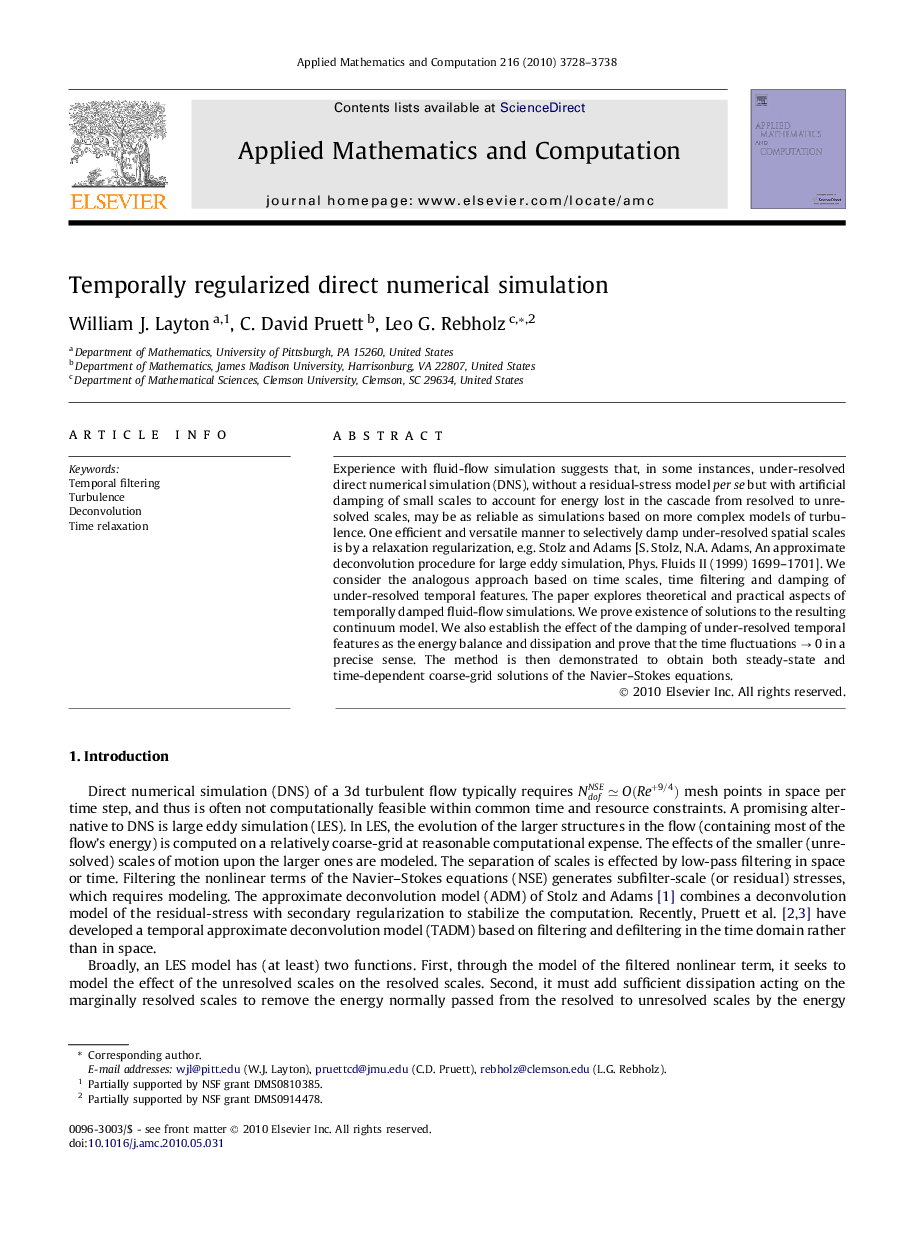| Article ID | Journal | Published Year | Pages | File Type |
|---|---|---|---|---|
| 4631948 | Applied Mathematics and Computation | 2010 | 11 Pages |
Experience with fluid-flow simulation suggests that, in some instances, under-resolved direct numerical simulation (DNS), without a residual-stress model per se but with artificial damping of small scales to account for energy lost in the cascade from resolved to unresolved scales, may be as reliable as simulations based on more complex models of turbulence. One efficient and versatile manner to selectively damp under-resolved spatial scales is by a relaxation regularization, e.g. Stolz and Adams [S. Stolz, N.A. Adams, An approximate deconvolution procedure for large eddy simulation, Phys. Fluids II (1999) 1699–1701]. We consider the analogous approach based on time scales, time filtering and damping of under-resolved temporal features. The paper explores theoretical and practical aspects of temporally damped fluid-flow simulations. We prove existence of solutions to the resulting continuum model. We also establish the effect of the damping of under-resolved temporal features as the energy balance and dissipation and prove that the time fluctuations → 0 in a precise sense. The method is then demonstrated to obtain both steady-state and time-dependent coarse-grid solutions of the Navier–Stokes equations.
